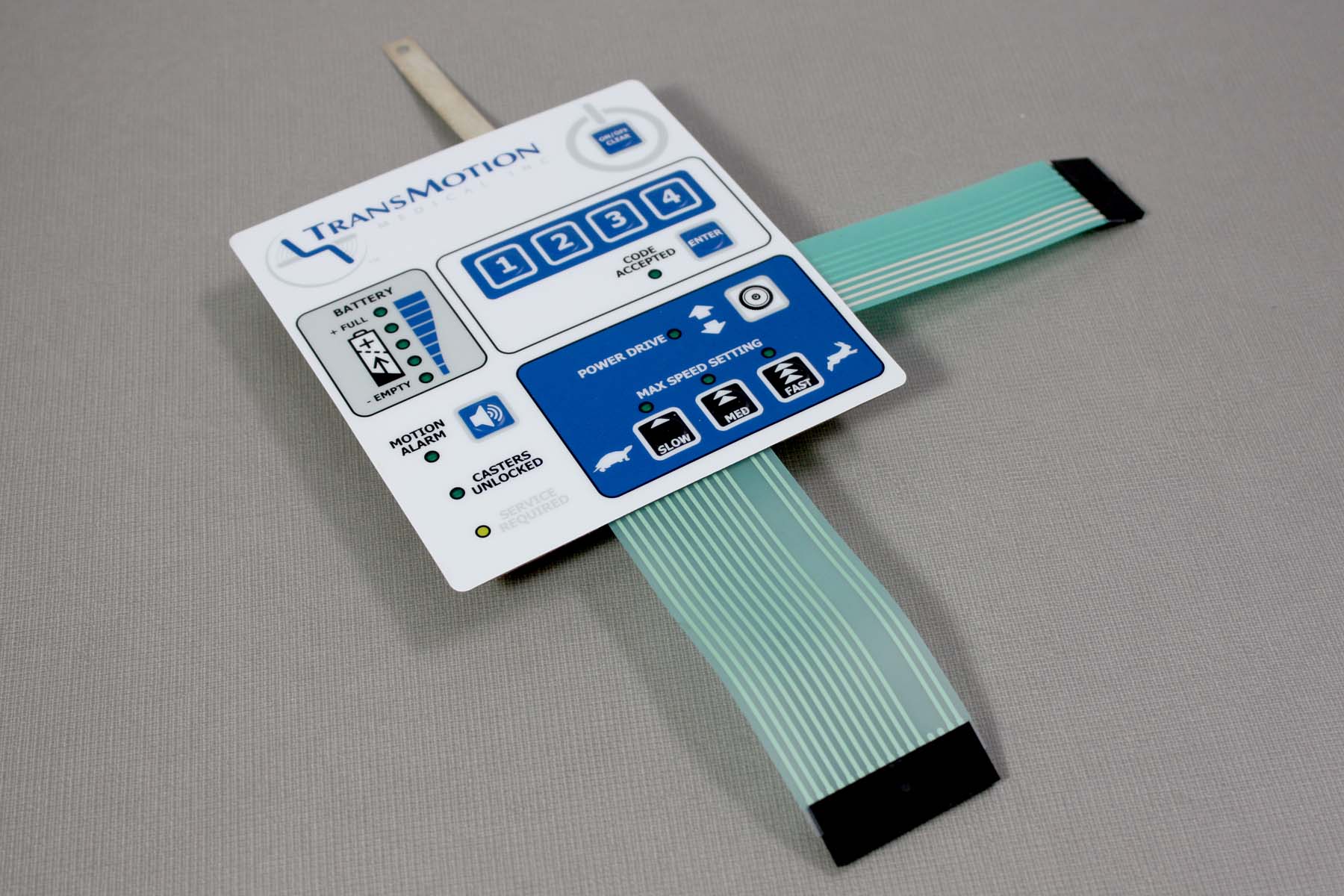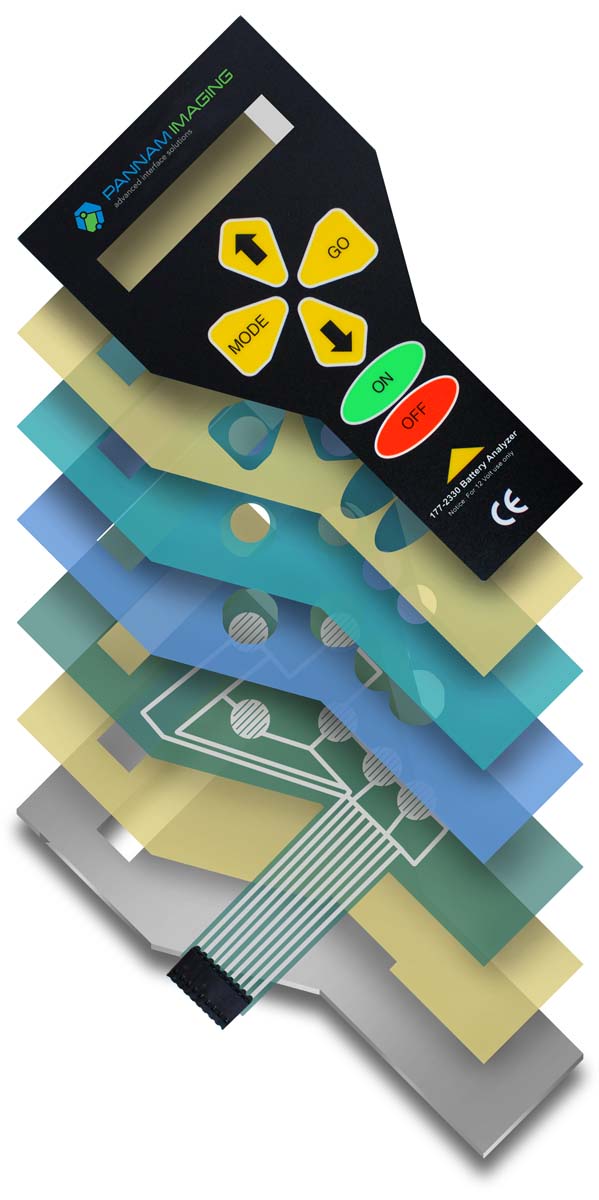Definition of Membrane Touch Switches
Membrane touch switches are sometimes referred to as membrane switches or touch switches. Generally, a membrane touch switch is a momentary electrical on/off switch for activating and de-activating a circuit. Membrane touch switches are thought to have momentary action because they operate under conditions of normally open, push to close, and immediate opening. This means that the switch must be pressed, either with an actuator or with a finger, so that its two poles make direct contact to close the circuit. When the membrane touch switch is released, the poles immediately separate and the switch returns to its original open state.
Membrane touch switches are manufactured by printing silver or carbon ink onto heat-stabilized polyester film. An overlay is applied to the first surface of the switch as the graphic interface. Because these top substrates are made from thin, pliable materials, they are referred to as “membranes” or “graphic overlay films.” Membrane touch switches are used in a variety of industries, ranging from medical to aerospace applications to consumer markets. They also may be used in industrial control systems. Often, membrane touch switches are used in appliance switches, computer keyboards, touch-sensitive toys, and phones. Membrane touch switches are becoming the norm in manufacturing and engineering industries because they enhance the aesthetics of human-machine interfaces while costing less and being more durable than other types of switches.
Construction of Membrane Touch Switches
While membrane touch switches may look very different as aesthetics may or may not be a consideration for their application, the basic construction of a membrane touch switch is the same. Typically, membrane touch switches are comprised of the following parts:
- Graphic overlay
- Graphic adhesive
- Top circuitry
- Spacer adhesive
- Bottom circuitry
- Backer adhesive
- Rigid support layer
Key Features of Membrane Touch Switches
There are a variety of materials that may be utilized in manufacturing membrane touch switches. These materials affect the features of the resulting membrane touch switch. For example, polyester frequently is used as the film when constructing membrane touch switches because of its durability and high temperature properties. Hard-coated polyester films are another option when constructing membrane touch switches because they may be designed especially for the graphics overlay film on membrane switches. Common key features of membrane touch switches include:
- High conductivity
- Flexibility
- Silver and carbon conductors
- Strong adhesion
- Fast curing
- High reliability
Types of Membrane Touch Switches
There are two types of membrane touch switches: tactile and non-tactile. Tactile membrane touch switches are so named because they react to user interaction when the switch makes contact with the underlying control panel. A tactile membrane touch switch operator feels the snap action of the switch when
it is pressed. Often, the tactile response is provided by dome embossing of the graphic overlay, the polyester circuit layer, or by inserting discrete steel domes in the keypad cavities. Tactile membrane touch switches often are used in keypads, instruments, or interface control-panel applications. Both tactile and non-tactile membrane touch switches may be constructed as keypads with or without graphic overlays.
Non-tactile membrane touch switches are for more durable applications. They often are considered to be more reliable and economical than tactile membrane touch switches. As such, they feature tougher construction and are completely sealed from the external environment. Non-tactile membrane switches are available in a wide range of shapes and sizes that may be customized for active keypad areas. Because non-tactile membrane touch switches do not provide the user with feedback like a tactile membrane switch does, they often include audio devices and LED indicators or display changes when pressed. Non-tactile membrane touch switches are capable of up to 3 million actuations, while tactile membrane touch switches are capable of up to 1 million actuations.





